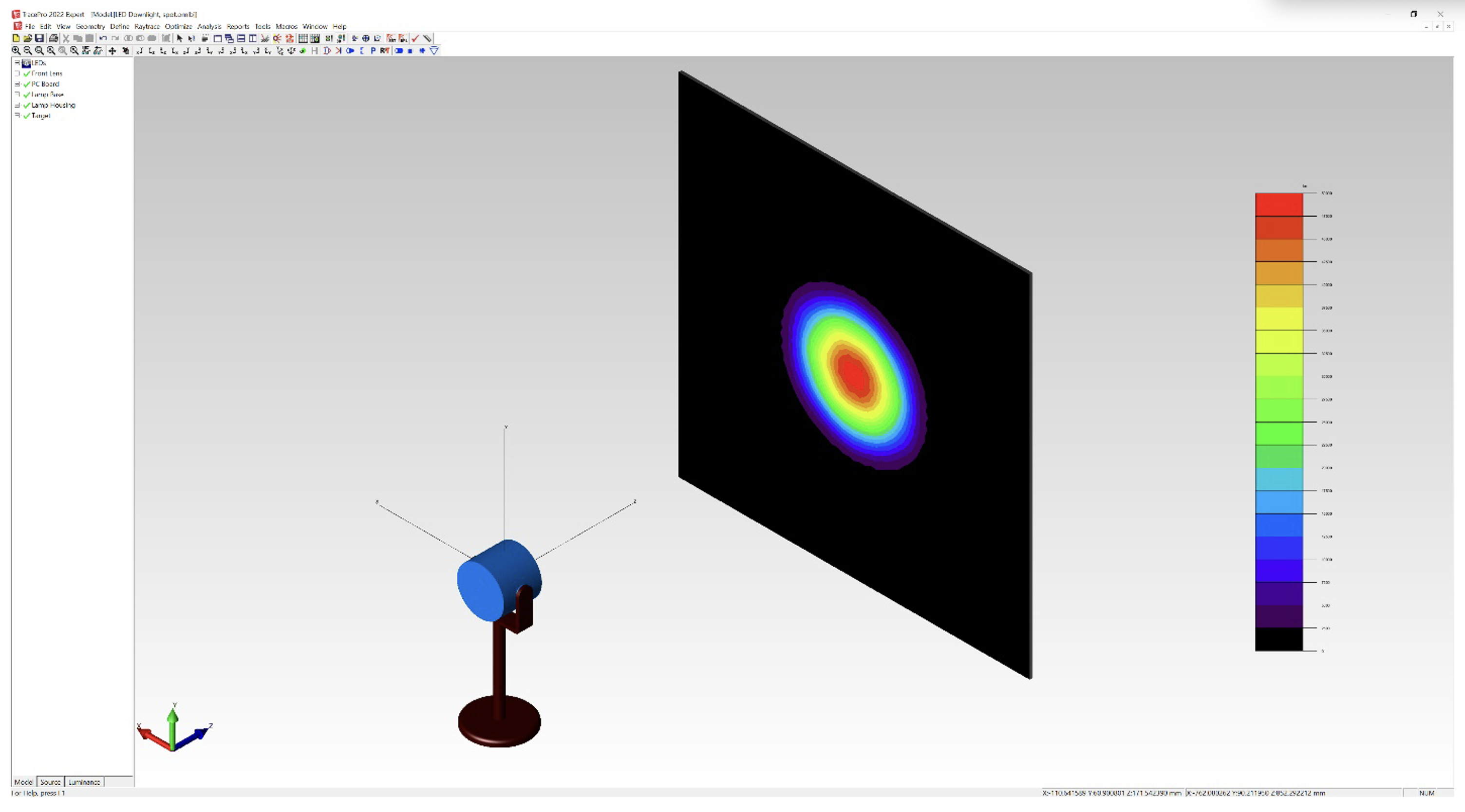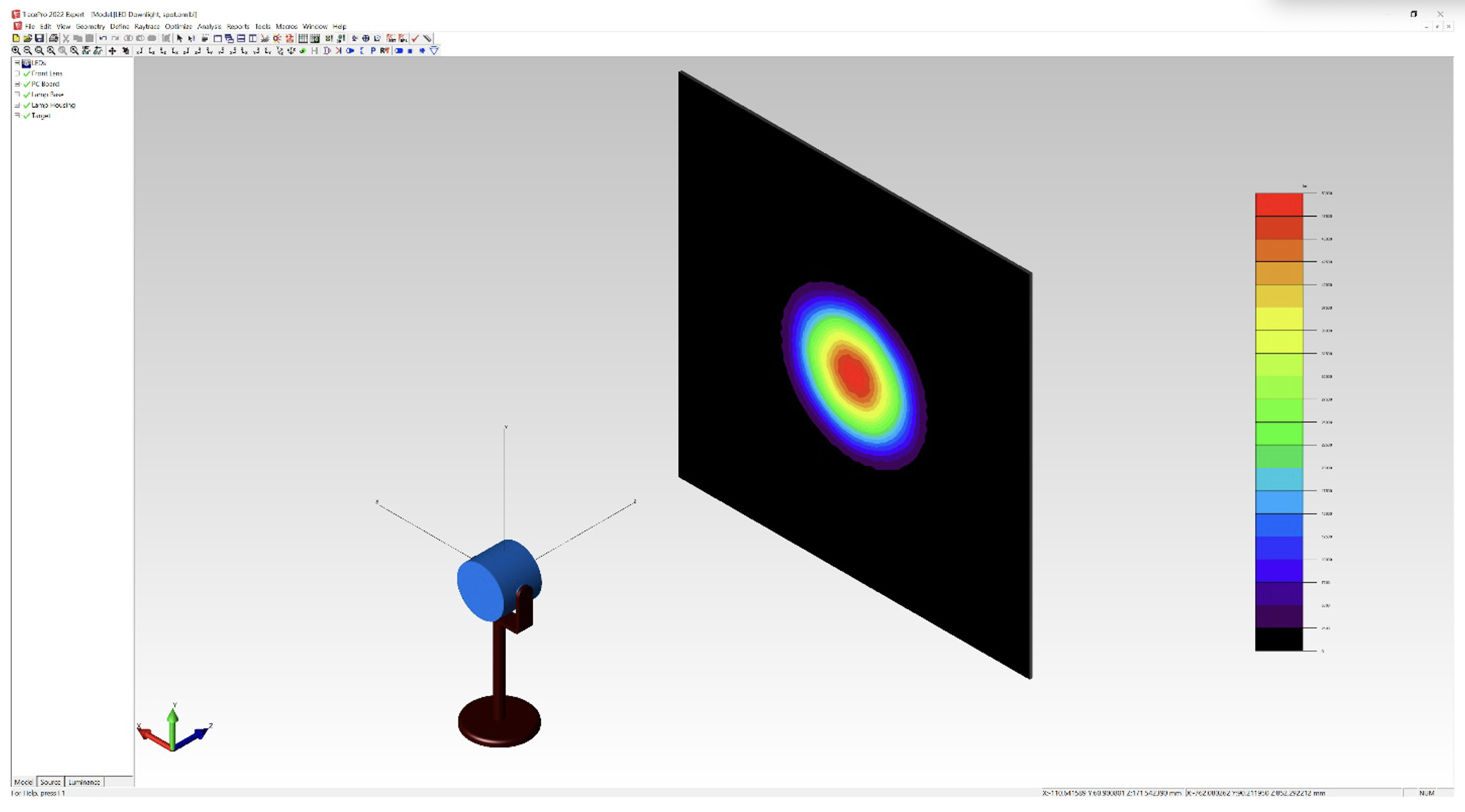Lambda Research Corporation use of Kubotek Kosmos technology in TracePro
So much of the 3D software world is concerned with modeling solid objects; where does a product development team turn when what they need to model is not solid but light itself? When Lambda Research Corporation turned to the Kubotek Kosmos 3D Framework to help drive their specialized software, they found performance gains five-fold greater than their previous platform.
"In our initial tests with the Kubotek Kosmos technology, we were thrilled to see [calculation] time cut in half." — Dave Jacobsen, Senior Application Engineer
In the world of Optical Engineering, designers model light as it passes through and reflects off instruments, mechanisms, fluids, gases, and even human tissue. To perform this task at the highest level, engineers need specialized software tools. Mainstream CAD software is optimized for the design and manufacture of rigid physical objects. Most engineering analysis software is optimized to calculate how objects and systems of objects react and deform to applied energy. For the experts in field of optics, the primary concern is how energy in the form of light is itself deformed as it interacts with rigid objects. A secondary challenge is that the wavelength of light is very small, requiring a level of modeling precision which is impractical for conventional product and machine designers.
Lambda Research Corporation entered the optical engineering software market in 1992 and introduced its TracePro product in 1995. The specialized program operates as a combined 3D design and analysis tool focused on illumination and optical systems applications. The software is used by engineers across many industries including aerospace and defense, medical devices, automotive instrument panels and lighting, and solar power. TracePro was successful in calculating high-precision intersections between rays and 3D CAD designs by incorporating commercially available geometric math libraries (aka modeling kernel). The key technique used in the program to calculate the path of light is known as ray tracing, which can require significant computational demands on computer resources.
To get useful results for many applications, millions of separate calculations are needed, often at 10 decimal places or higher precision. As the TracePro team continued to mature the program, the most significant challenge faced was the time required to calculate high-fidelity results on the computer hardware available to users. The faster customers can get results, the more time they have available to analyze additional design iterations and more complex design geometry which stands to increase the quality of the design.
Dave Jacobsen, Senior Application Engineer with Lambda Research Corporation explained:
“Our customers are always looking to accurately analyze more and more complex shapes and more design iterations. When our software can get them results faster, they have time to try things they would not have tried before. This can have a dramatic impact on the capabilities of the system they are designing.”
The growing availability of multi-core processors in PCs starting around 2005 offered the possibility of significant performance improvements without adding dramatic expenses. As the TracePro team started testing with the new generation processors they did see performance improvements, but not as much as they had hoped.
Around 2012 the TracePro development team learned of a new modeling kernel under development by Kubotek, now commercially available as the Kubotek Kosmos 3D Framework. They became interested because the Kubotek modeler was started after the multi-core CPU revolution and was architected at its base level to take full advantage of high numbers of processors. Lambda Research Corporation was able to license the Kubotek Kosmos technology and quickly incorporate it into TracePro alongside their existing modeling kernel.

|
|
This TracePro performance test LED illuminator model confirmed dramatic performance gains across multiple product releases |
The TracePro 2022 release marked the completion of the multi-year transition to exclusively using the Kubotek Kosmos kernel.
“One demonstration model we used for years started out taking around a minute to calculate results. In our initial tests with the Kubotek Kosmos technology, we were thrilled to see that time cut in half. As we continued to utilize the new kernel more, we were excited to see calculation time on that model drop to 8–9 seconds," Jacobsen added.
A secondary benefit to TracePro users has been the complete set of CAD import translators which are available with the Kubotek Kosmos 3D Framework product. These translators allow TracePro users to quickly read precise 3D models provided by product designers using any of the popular mechanical CAD programs.
Lambda Research Corporation makes its tools for innovators in optical engineering, opening new possibilities in industries as varied as medical research, indoor air quality, and mapping the ocean floor. This spirit of pursuing new frontiers is what led us to develop our 3D Framework. We can't wait to see what else they make possible!


